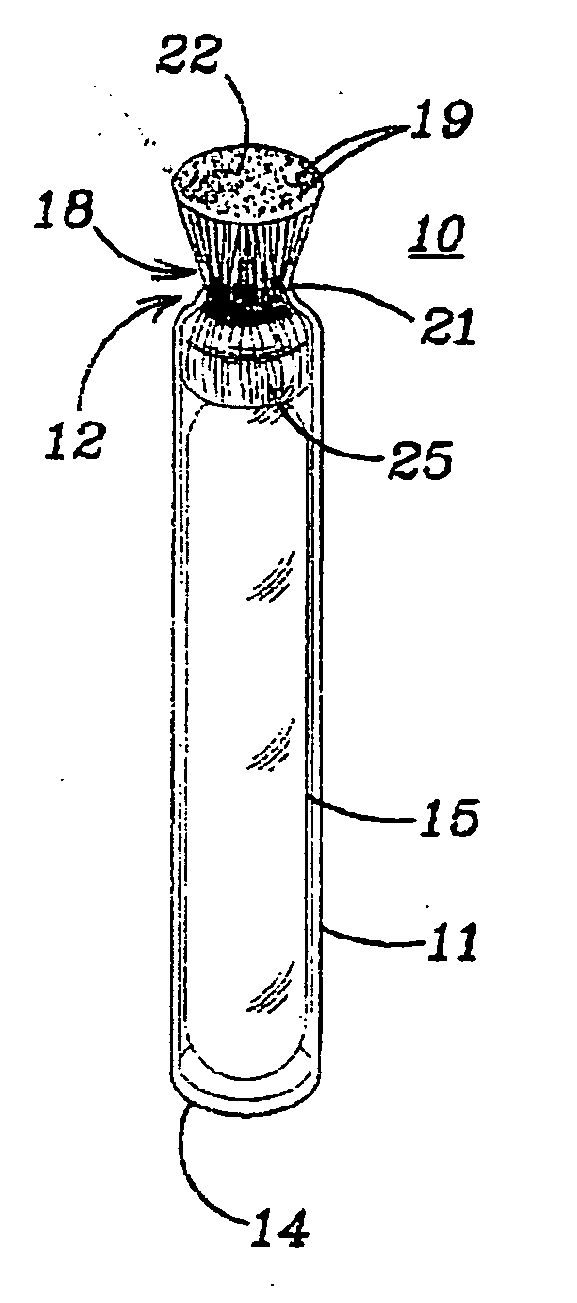Single use applicator for applying viscous fluids
a technology of fluid application and applicator, which is applied in the direction of carpet cleaners, brushes, hand devices, etc., can solve the problems of reducing the efficiency of the device, limiting the amount of fluid to be dispensed, and the applicator to drip fluid from the tip first and then slow down, so as to achieve fast and easy technique of “wet out” the application tip and uniform fluid flow
- Summary
- Abstract
- Description
- Claims
- Application Information
AI Technical Summary
Benefits of technology
Problems solved by technology
Method used
Image
Examples
Embodiment Construction
[0041] When referring to the preferred embodiments, certain terminology will be utilized for the sake of clarity. Use of such terminology is intended to encompass not only the described embodiments, but also technical equivalents, which operate and function in substantially the same way to bring about the same result.
[0042] Referring now to more particularly to the drawings and FIG. 1-6B thereof an embodiment of the single use applicator device 10 is therein illustrated.
[0043] The device 10 includes an outer cylindrical tube body 11, which is open at one end 12, with a rim tapering section 13, and which is closed at its other end 14.
[0044] The tube 11 is preferably constructed of a chemically inert thermoplastic resin of well known type such as polyethylene resin. The body 11 is capable of being readily deformed by finger pressure of the user, and returns to its original shape upon pressure release. The resin material comprising the tube 11 is also capable of being compressed and...
PUM
 Login to View More
Login to View More Abstract
Description
Claims
Application Information
 Login to View More
Login to View More - R&D
- Intellectual Property
- Life Sciences
- Materials
- Tech Scout
- Unparalleled Data Quality
- Higher Quality Content
- 60% Fewer Hallucinations
Browse by: Latest US Patents, China's latest patents, Technical Efficacy Thesaurus, Application Domain, Technology Topic, Popular Technical Reports.
© 2025 PatSnap. All rights reserved.Legal|Privacy policy|Modern Slavery Act Transparency Statement|Sitemap|About US| Contact US: help@patsnap.com



